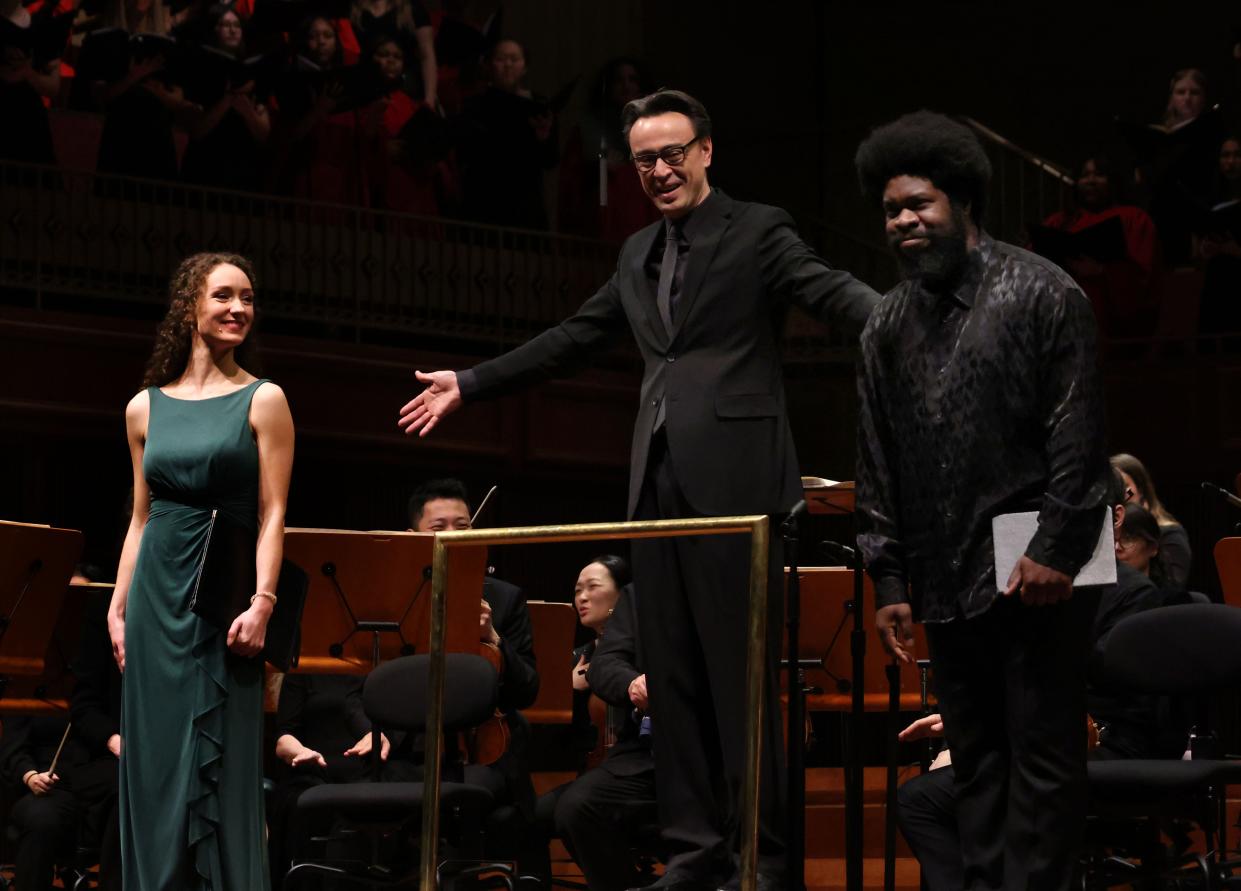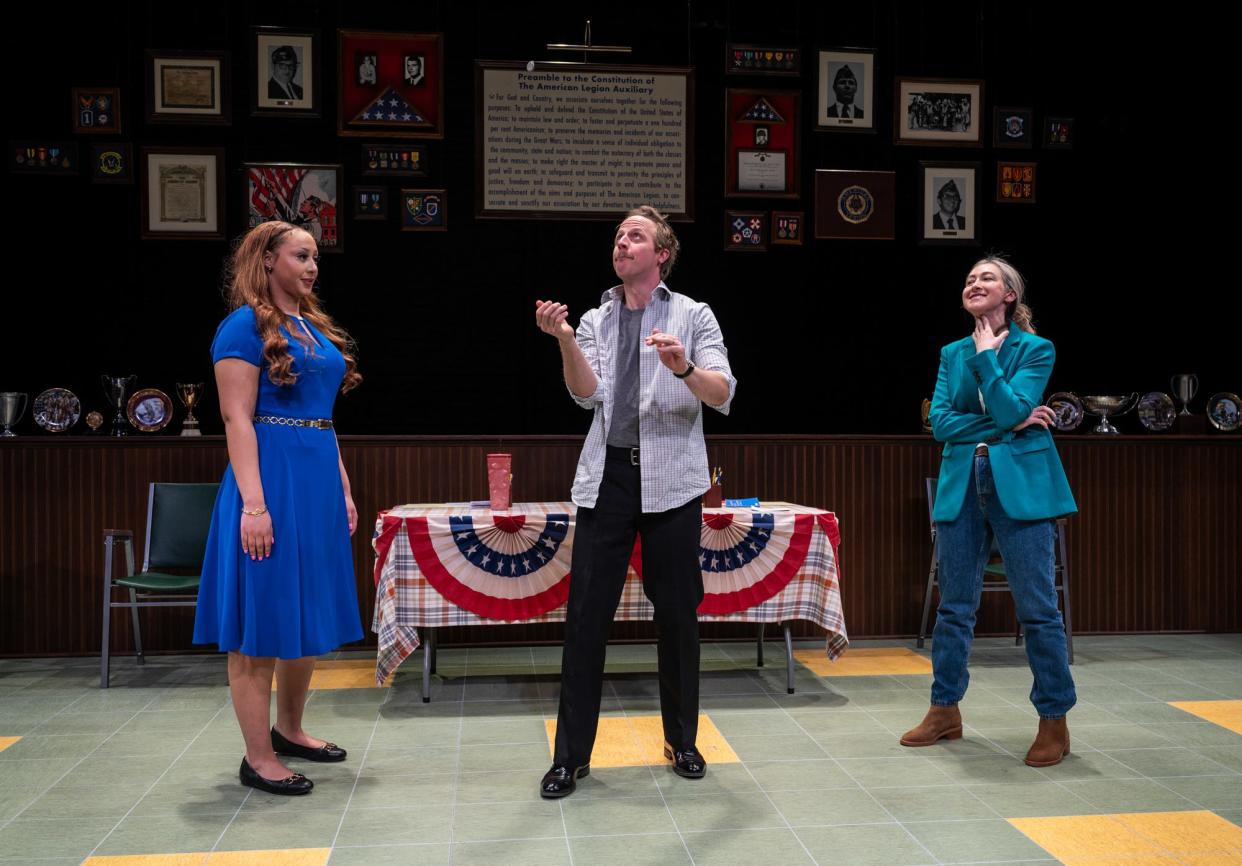Milwaukee arts groups are in tension over fundraising, forum report concludes

A new Wisconsin Policy Forum study of Milwaukee's performing arts community raises big and not easily resolved questions about fundraising competition between large and small groups, about the future viability of the United Performing Arts Fund, and to what extent philanthrophy can and will sustain groups still recovering from COVID-19 pandemic losses.
As past forum reports have done, the new study also points out that Milwaukee groups receive very little public funding; in 2023, Wisconsin finished dead last among 50 states in state funding for the arts with $0.14 per capita, compared to the 50-state median of $0.85 and per capita figures for Ohio and Minnesota at $1.71 and $7.62.
The new report, titled "Curtain Time: Assessing and Responding to Milwaukee's Performing Arts Challenges," led by forum president Rob Henken and released Wednesday morning, is based on a detailed financial study of 13 UPAF-funded groups and "dozens of interviews with Milwaukee performing arts leaders, board members, funders, and other stakeholders to provide a more 'real time' and nuanced look at the state of thesector."
Here are summaries of the report's key findings.
Groups are still rebounding from pandemic losses
Milwaukee Symphony Orchestra, Milwaukee Repertory Theater, Milwaukee Ballet, Florentine Opera and Skylight Music Theatre all saw increases in ticket sales revenue for fiscal year 2023 compared to the prior fiscal year. "However, each still had substantially lower performance revenue totals in 2023 than 2017, with the exception of the MSO," the study states. The MSO's new concert hall enables it to stage more ticket-selling events than it did in past years as a tenant at the Marcus Performing Arts Center.

Philanthropy may not be able to keep making up for losses
"For most organizations, declines in performance revenue have been offset by increases in contributed income," the study states, noting that five of UPAF's six Cornerstone groups received sizable increases in unrestricted contributed income from donors in 2022, when compared to 2017.
"This raises questions about the future of arts organizations whose survival hinges on philanthropic generosity if that generosity cannot be sustained," the study warns.
Concern about big groups in conflict with smaller groups
Philanthropic leaders are concerned about competition between larger and smaller groups for dollars.
"There is tension between consistent requests from larger organization for sizable donations to support new or improved buildings, and heightened requests for operational support from smaller organizations still recovering from the pandemic," the study declares, citing interviews with philanthropists.
In the past five years, capital campaigns for five performing arts organizations have targeted more than $250 million from philanthropy, the study states.

Has the United Performing Arts Fund become outmoded?
The forum report bluntly titles this section "UPAF: To be or not to be, that is the question."
It notes that UPAF was founded in 1966 to support the Rep, MSO, Florentine and Ballet when all were tenants of the venue now called the Marcus Performing Arts Center. That's no longer the situation.
Today UPAF supports 55 performing arts organizations through its annual campaign. Of the $7.2 million raised in 2023 that it allocated to groups for operating support, the Rep and MSO combined received 41% of the total; another 55% was divided among UPAF’s 12 other member groups; the remaining 4% was divided among 41 smaller affiliates.
The forum report acknowledges that there is no consensus on how such a fundraising umbrella should allocate funds. "Some argue that a new model may be appropriate to serve a diverse sector of large, medium, and small performing arts organizations, while others would prefer to see even more support for larger organizations to ensure that they thrive," it states.
Conflict between differently sized organizations "has been exacerbated by stagnant workplace giving through UPAF over the past decade," the report adds.
UPAF is searching for a new executive following the departure of Patrick Rath in February.
Possible role models in Pittsburgh, Cincinnati and Kansas City
The forum report identified three Midwestern counterparts whose creative approaches to supporting the performing arts may serve as examples for Milwaukee:
Pittsburgh's Cultural District is managed by the nonprofit Pittsburgh Cultural Trust, which is funded by a combination of corporate, private and government monies, encouraging cooperation among the arts entities it works with. The trust was established in 1984 as part of an urban renewal effort. Coincidentally, the president and CEO of the trust is Kendra Whitlock Ingram, former CEO of Milwaukee's Marcus Performing Arts Center.
Cincinnati's ArtsWave draws on both investment income from an endowment as well as annual giving campaigns to support 49 arts organizations through unrestricted sustaining grants. Those grants are three-year commitments to facilitate planning. Through competitive project grants, ArtsWave also provides some funds to an additional 100 organizations.
Kansas City's Charlotte Street Center is an arts incubator that focuses on supporting small arts groups and individual artists.
Conclusion: An organized effort is necessary
"Continuation of the status quo in which each Milwaukee performing arts organization largely fends for itself to secure necessary philanthropic resources will continue to breed competition and may discourage additional strategic partnerships among individual groups," the forum report states.
If Milwaukee leaders "wish to sustain a robust and diverse mix of small, medium, and large performing arts groups, then an organized effort is necessary," the report concludes.
The report suggests convening "top funders, board leaders, and public sector officials" to create a strategic vision for the sector and a structure for philanthropic giving and workplace campaigns; to consider best models from other cities such as Pittsburgh, Cincinnati and Kansas City; and to "elevate the push" for increased public funding from state government.
Who funded the report?
The Northwestern Mutual and Herzfeld foundations and Bader Philanthropies commissioned the study. Wisconsin Policy Forum is a nonpartisan policy research organization.
Henken is stepping down as forum president in July, in part to take on a new role as part-time executive director of the Milwaukee-based Herzfeld Foundation, which makes grants to arts, cultural and other organizations.
Which Milwaukee organizations were studied?
The Wisconsin Policy Forum looked at data from 2012 through 2022 for 13 of UPAF's 14 member groups, focusing on the years 2022, 2017 and 2012 as points of comparison. It did not include UPAF member Black Arts MKE, which joined in 2020 and for which earlier data points were not available.
How can I read the full report?
It will be posted at the Wisconsin Policy Forum website, wispolicyforum.org.
This article originally appeared on Milwaukee Journal Sentinel: Arts funding model in Milwaukee may not be sustainable, report warns
